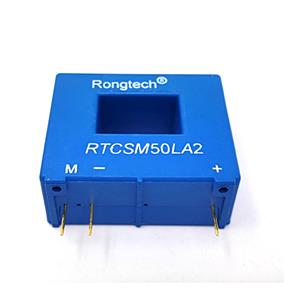The Critical Role of Sensors in Automotive Battery Management Systems (BMS)
Introduction
As the automotive industry accelerates toward electrification, Battery Management Systems (BMS)have become the backbone of electric vehicles (EVs), hybrid electric vehicles (HEVs), and plug-in hybrids (PHEVs). Among the key components ensuring safety, efficiency, and longevity, sensorsplay an indispensable role. They monitor critical parameters such as voltage, current, temperature, and state of charge (SoC), enabling real-time decision-making and protection mechanisms.
This article explores the types of sensors used in BMS, their functions, and their impact on EV performance and safety.
1. Types of Sensors in Automotive BMS
(1) Current Sensors
Current sensors measure the flow of electricityinto and out of the battery pack. They are crucial for:
State of Charge (SoC) Calculation– By integrating current over time, the BMS determines how much charge remains.
Overcurrent Protection– Prevents damage from excessive discharge or charging currents.
Regenerative Braking Control– In EVs, current sensors help manage energy recovery during braking.
Common Technologies:
Hall-effect sensors(non-intrusive, suitable for high currents)
Shunt resistors(high precision, used in low-current applications)
Open-loop & closed-loop current sensors(balance cost and accuracy)
(2) Voltage Sensors
Voltage sensors monitor the electrical potentialacross individual battery cells or the entire pack. Their functions include:
Cell Balancing– Ensures all cells operate at similar voltages to prevent overcharging or deep discharging.
State of Charge (SoC) & State of Health (SoH) Estimation– Voltage trends help predict battery aging and remaining capacity.
Fault Detection– Abnormal voltage spikes or drops indicate potential short circuits or cell failures.
Key Requirements:
High accuracy (±10mV or better)
Fast response timefor dynamic voltage changes
Isolationto prevent electrical interference
(3) Temperature Sensors
Temperature is one of the most critical factors affecting battery performance and safety. Sensors monitor:
Cell Temperature– Prevents overheating (thermal runaway) and ensures optimal chemical reactions.
Cooling System Efficiency– Adjusts fans, liquid cooling, or heat sinks based on real-time data.
Charging Speed Control– High temperatures may require reduced charging rates to avoid damage.
Common Types:
Negative Temperature Coefficient (NTC) Thermistors(cost-effective, high sensitivity)
Resistance Temperature Detectors (RTDs)(more stable but expensive)
Infrared (IR) Sensors(non-contact, used in some advanced BMS)
(4) Pressure & Gas Sensors (Advanced BMS)
Pressure Sensorsdetect swelling in battery cells (a sign of internal issues).
Gas Sensorsmonitor for venting gases(e.g., CO₂, hydrogen) in case of thermal runaway.
2. How Sensors Enhance BMS Functionality
(1) Safety & Protection
Overcharge/Over-discharge Prevention– Voltage and current sensors ensure cells operate within safe limits.
Thermal Runaway Mitigation– Temperature sensors trigger cooling or shutdown if overheating is detected.
Short Circuit Detection– Rapid current spikes activate protective circuits.
(2) Performance Optimization
State of Charge (SoC) Accuracy– Precise current and voltage sensing improves remaining range estimation.
State of Health (SoH) Monitoring– Long-term voltage and temperature trends predict battery degradation.
Dynamic Power Management– Adjusts power delivery based on real-time sensor data for efficiency.
(3) Smart Charging & Energy Management
Fast Charging Control– Temperature and current sensors regulate charging speed to prevent damage.
Regenerative Braking Efficiency– Current sensors optimize energy recovery in EVs.
Load Balancing– Ensures even power distribution in multi-cell battery packs.
3. Future Trends in BMS Sensor Technology
Wireless Sensor Networks (WSNs)– Reduce wiring complexity in large battery packs.
AI-Powered Predictive Maintenance– Machine learning algorithms analyze sensor data for early failure detection.
Solid-State Battery Integration– New chemistries will require even more precise temperature and pressure monitoring.
Miniaturized & High-Precision Sensors– Improved accuracy and durability for next-gen EVs.
Conclusion
Sensors are the "eyes and ears" of the BMS, ensuring that EV batteries operate safely, efficiently, and reliably. From current and voltage monitoring to temperature control, these components enable real-time decision-making, fault prevention, and performance optimization. As the automotive industry moves toward higher autonomy, faster charging, and longer battery life, advanced sensor technologies will play an even more critical role in shaping the future of electric mobility.
Key Takeaways:
✅ Current sensorsmeasure charge/discharge flow for SoC and protection.
✅ Voltage sensorsensure cell balancing and detect electrical faults.
✅ Temperature sensorsprevent overheating and optimize cooling.
✅ Future sensorswill be smarter, wireless, and more precise.
Would you like a deeper dive into a specific sensor type or its implementation in EVs? Let us know in the comments or contact our technical team for expert insights.




